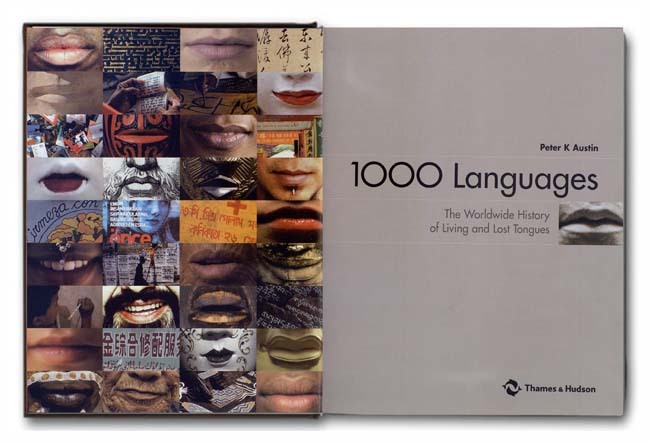One of the nicest things about my new job is meeting hundreds of people who are keen on foreign language learning. And one amazing thing about those meetings – I learn something new every day. This entry is about a book I picked up during one of these meetings – and I hope you’ll be encouraged to pick it up too!
An Encyclopaedia of Languages? Yawn…
No, wait, hear me out! “1000 Languages” edited by Peter K Austin is a lot more than just that. This, to me, was a book with a purpose. And for any foreign language fan out there, the purpose will become clear soon after they start browsing through the pages. This is not a heavyweight linguistic juggernaut you may expect from its title: The book is thick enough to make a good impression on your bookshelf (which is how I managed to notice it in Pronunciation Studio‘s reception – thanks a lot for this, folks!) – but not daunting. Its size and subject matter guarantee a “dip-in-dip-out” approach.
If I was to describe it in any way, I’d compare “1000 Languages” to a compact language museum – well-stocked and extremely well designed. The entries are kept brief but informative, and the photographs give you a rare privilege to observe the languages in their “natural habitats.” It’s the photos that make for the book’s appeal, really: combine linguistics, typography and travel documentary in one – and you’ve got me interested.
As for the data, the books gives you just enough facts and information to get you excited about your chosen foreign language again. You can learn how many speakers use the language, find out more about its origins, history and current situation – and, in a nice and handy touch, discover how to count to ten in most of the languages described! Again, this may not be enough to support your PhD thesis, but it’s definitely sufficient for linguistic enthusiasts – and those who fell in love with an exotic language and would like to know more.
A Book on a Mission – Lost Languages in Focus
Once you get past the “most popular” languages, Austin’s book delivers some of its most powerful punches. The section on endangered dialects is fascinating – it retains the books encyclopaedic style, but knocks you out with the data it delivers. How many languages are going to disappear in the next century? How to stop this from happening? How would you like to pack up and go, and find the 5 people who speak Yuchi – and make sure the language lives on? If you’re like me, this section alone will give you plenty of things to think about
Who is it for?
Let’s sum up, then: don’t expect this book to give you extensive knowledge about any of the languages it describes. It’s not an academic book per se – although the amount of work that went into collecting and distilling the knowledge is immense.
When you pick up “1000 Languages,” prepare to be surprised by the facts and factoids it offers – amused and inspired by the photographs and artwork – and maybe, just maybe, motivated to pick one of the languages and start learning it for real. Here’s to that!
Read more about Peter K Austin’s “1000 Languages” here. (This is also a source for the cover picture)
Check out a piece by the editor which he did with the Guardian – “Top 10 Endangered Languages” – mind-blowing!
Ready to order? Good.
Wiktor (Vic) Kostrzewski (MA, DELTA) is an author, translator, editor and project manage based in London. When he works, he thinks about languages, education, books, EdTech and teachers. When he doesn’t work, he probably trains for his next triathlon or drinks his next coffee.
BRAVE Learning (formerly known as 16 Kinds) is a lifelong learning and productivity blog. If you enjoy these posts, please check out one of my books and courses.
My recent publications, and my archive, is now all available on my new project: PUNK LEARNING. Hope to see you there!

